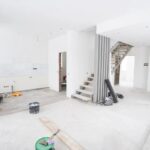Sick Building Syndrome (SBS) is a condition where occupants of a building experience acute health and discomfort issues that seem linked to time spent in the building, but no specific illness or cause can be identified. As concerns about indoor air quality (IAQ) rise, understanding SBS and its implications is essential for ensuring healthier indoor environments.
What is Sick Building Syndrome?
SBS is characterized by a range of symptoms that appear to be connected to time spent in a building. These symptoms can affect various parts of the body and are often relieved soon after leaving the building. SBS can affect homes, offices, and any other indoor environments.
Common Symptoms of SBS:
- Headaches
- Dizziness
- Nausea
- Eye, nose, or throat irritation
- Dry cough
- Fatigue
- Difficulty concentrating
- Skin irritation
Common Symptoms of SBS:
While the extract cause of SBS can be difficult to pinpoint, several factors are commonly associated with the condition:
- Poor Ventilation
Inadequate ventilation can lead to a buildup of indoor pollutants, contributing to SBS. Proper ventilation systems are crucial to maintaining good IAQ and preventing SBS.
- Chemical Contaminants
Indoor air can contain chemical contaminants from various sources, including:
- Volatile Organic Compounds (VOCs): Emitted by paints, cleaning products, office equipment, and adhesives.
- Formaldehyde: Found in building materials, furniture, and household products.
- Pesticides and Biocides: Used in pest control and cleaning processes.
- Biological Contaminants
Mold, bacteria, and viruses can proliferate in poorly maintained buildings, leading to SBS. Sources include damp areas, HVAC systems, and water-damaged materials.
- Physical Factors
Temperature, humidity, lighting, and noise levels can also impact occupant comfort and contribute to SBS. Maintaining optimal indoor conditions is key to preventing discomfort.
Identifying and Addressing Sick Building Syndrome
Identifying SBS involves observing symptom patterns and assessing the building environment. Addressing SBS typically requires a multi-faceted approach:
- IAQ Assessment
Conducting a comprehensive IAQ assessment is the first step in identifying potential causes of SBS. This includes monitoring levels of indoor pollutants, assessing ventilation systems, and evaluating building maintenance practices.
- Improving Ventilation
Enhancing ventilation can significantly improve IAQ:
- Increase Fresh Air Intake: Ensure adequate fresh air intake and proper air distribution.
- Regular Maintenance: Regularly clean and maintain HVAC systems to prevent the buildup of pollutants.
- Low-Emission Products: Use low-emission building materials and household products.
Proper Storage: Store chemicals and cleaning agents in well-ventilated areas.
- Optimizing Physical Environment
Adjusting physical factors can also mitigate SBS:
- Temperature and Humidity Control: Maintain consistent and comfortable temperature and humidity levels.
- Improve Lighting: Ensure adequate natural lighting and minimize glare from artificial sources.
- Noise Control: Implement measures to reduce excessive noise levels.
The Importance of Addressing Sick Building Syndrome
- Healthier Indoor Environment
Addressing SBS can significantly improve the health and well-being of building occupants. Reducing pollutants and enhancing ventilation create a safer and more comfortable environment.
- Enhanced Comfort and Productivity
Good IAQ contributes to overall comfort and productivity. Proper ventilation, pollutant control, and regular maintenance create an environment that is conducive to work and daily activities.
- Regulatory Compliance
Adhering to IAQ standards and addressing SBS ensures compliance with national regulations and demonstrates a commitment to the health and well-being of building occupants.
Conclusion
Sick Building Syndrome is a significant concern that can affect the health and comfort of building occupants. By understanding the causes and implementing effective strategies to improve IAQ, building owners and managers can mitigate the impact of SBS. Ensuring a healthy indoor environment is essential for the well-being and productivity of all occupants.




